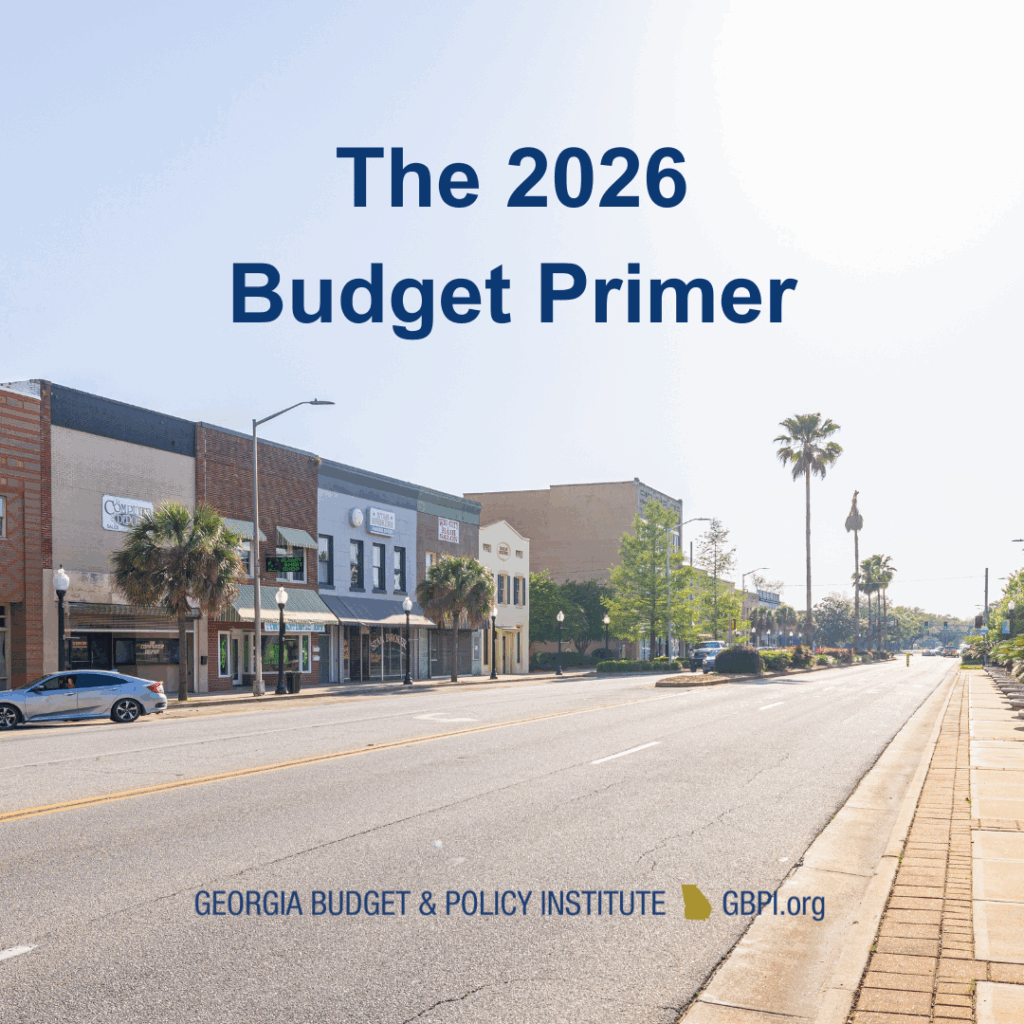Quick fact sheet available here.
What is Temporary Assistance for Needy Families or TANF?
TANF is the state’s cash assistance program that supports families with children and with very low incomes. Parents must meet certain requirements, like work requirements, to qualify for the program. TANF started in 1996 and replaced the previous cash assistance program, Aid to Families with Dependent Children or AFDC.
How is TANF Funded?
TANF is funded by a $330 million fixed but flexible federal block grant each year. The state must also meet a Maintenance of Effort (MOE) contribution of $173 million a year. However, only a small percentage of those resources support families receiving monthly TANF benefits. In federal fiscal year 2022, about 18% of TANF spending went to payments to TANF families, work programs and supports, child care and program administration. About 69% of TANF resources went to the state’s child welfare and foster care systems.[1]
How many families receive TANF in Georgia?
As of October 2023, 4,521 families received TANF assistance.[2] Those families can be broken up into two types: families where the parent or caregiver is considered a TANF recipient (these are known as adult-aided families); and families where the caregiver is not considered a TANF recipient and benefits are just for the children (these are known as child-only families). Most TANF cases in Georgia are child-only cases where the child lives with a relative.

How well does TANF reach families in poverty?
In Georgia, TANF does not reach many families living in poverty. In fact, it reaches far fewer families in poverty than it did when the program started in 1996. In 1996, TANF reached 82 families for every 100 families in poverty; in 2020, that ratio dropped to 5 families for every 100 in poverty.[3]

How big are the families that receive TANF?
On average, the size of TANF families is quite small. More than three-fourths of TANF cases are families with one or two people claiming benefits.[4]
How much income can you have to be eligible for TANF in Georgia?
A family applying for TANF benefits must be below a maximum monthly income level based on their family size (see examples below). For families already receiving benefits, they become ineligible if they exceed the maximum income limit after earnings or other income are disregarded.[5]

Assets Tests:
TANF applicants’ assets cannot be more than $1000 in savings or include a vehicle valuing more than $4,650. [6] Families may have to spend down their savings or get rid of their vehicle to be eligible for TANF.
Work requirements
Parents receiving TANF benefits must engage in work activities. Countable work activities include completing a high school degree or GED, job training, job search, community service, substance abuse treatment or subsidized or unsubsidized work.[7]
- Recipients with a child six years old or older must engage in a countable work activity for 30 hours a week.
- Recipients with a child under six are only required to work in a countable activity for 20 hours a week.
How much can a family receive in TANF benefits?
TANF monthly benefits adjust to family size, but they are extremely low. Benefits for a family of three are about 14% of the federal poverty line. A parent may receive other support, like child care assistance, to help them work or complete education or training.

Fact Sheet

Endnotes
[1] U.S. Department of Health and Human Services, Office of the Administration for Children and Families, Office of Family Assistance. (2024, January 22). TANF financial data – FY 2022. https://www.acf.hhs.gov/ofa/data/tanf-financial-data-fy-2022.
[2] Department of Human Services. (2023). Office of family independence data. https://dhs.georgia.gov/division-family-children-services-office-family-independence.
[3] Center on Budget and Policy Priorities analysis of Census Current Population Survey and Health and Human Services AFDC and TANF data. To improve the reliability of the data, CBPP uses two-year averages. Read more here: https://www.cbpp.org/research/income-security/tanf-cash-assistance-should-reach-millions-more-families-to-lessen.
[4] U.S. Department of Health and Human Services, Office of the Administration for Children and Families, Office of Family Assistance. (2023, October 30). Characteristics and financial circumstances of TANF recipients, fiscal year 2022. https://www.acf.hhs.gov/ofa/data/characteristics-and-financial-circumstances-tanf-recipients-fiscal-year-2022.
[5] Georgia disregards $250 a month in earnings when calculating monthly benefits to pay recipient families. Urban Institute. (2021). Earned income disregards for initial income eligibility purposes. Welfare Rules Database. https://view.officeapps.live.com/op/view.aspx?src=https%3A%2F%2Fwrd.urban.org%2Fwrd%2FData%2Fdatabook_tabs%2F2020%2FI.E.2.xlsx&wdOrigin=BROWSELINK
[6] Urban Institute. (2021). Asset limits for applicants, July 2020. Welfare Rules Database. https://view.officeapps.live.com/op/view.aspx?src=https%3A%2F%2Fwrd.urban.org%2Fwrd%2FData%2Fdatabook_tabs%2F2020%2FI.C.1.xlsx&wdOrigin=BROWSELINK.
[7] Urban Institute. (2021). Work-related activity requirements for single-parent head of unit, July 2020. Welfare Rules Database. https://view.officeapps.live.com/op/view.aspx?src=https%3A%2F%2Fwrd.urban.org%2Fwrd%2FData%2Fdatabook_tabs%2F2020%2FIII.B.2.xlsx&wdOrigin=BROWSELINK








